Free download: Top 10 Natural & Easy Remedies for Joint Pain from Home. Learn these helpful remedies.
Estimated Reading Time: 7 minutes read
Dealing with a pinched nerve in the elbow can be both painful and frustrating. It often happens from everyday habits like how you sit or the way you hold your phone. Changing these small things can significantly affect how your elbow feels. Paying attention to your posture is a key step in relieving that annoying nerve pain.
Simple stretches and exercises can help fix a pinched nerve in the elbow. It’s about loosening tight muscles and strengthening the area around the elbow to prevent future pinching. This guide will walk you through some easy exercises you can do at home to help your elbow feel better.
Table of Contents
Causes of a Pinched Nerve in the Elbow
Experiencing a pinched nerve in the elbow is often linked to everyday habits and postures that we might not even notice. This discomfort arises when excessive pressure is applied to a nerve by surrounding tissues, such as bones, cartilage, muscles, or tendons. This pressure disrupts the nerve’s function, causing pain, tingling, or numbness.
- Repetitive Motions: Activities like typing or playing tennis that involve repetitive wrist and arm movements can lead to nerve compression.
- Prolonged Bending of the Elbow: Frequently holding your phone to your ear or sleeping with your elbow bent can pinch the nerve.
- Pressure on the Elbow: Leaning on your elbow for extended periods, especially on hard surfaces, can contribute to nerve irritation.
- Injury or Trauma: A direct blow to the elbow can inflame the surrounding tissues, leading to nerve compression.
- Health Conditions: Conditions like arthritis or diabetes can increase the risk of nerve compression in the elbow.
Symptoms of a Pinched Nerve in the Elbow
The symptoms of a pinched nerve in the elbow can vary depending on the severity and the specific nerve involved. Recognizing these symptoms early can help in addressing the issue before it worsens.
- Pain: This can range from a mild ache to sharp, severe discomfort around the elbow.
- Numbness or Tingling: A common sensation often described as “pins and needles” in the affected arm or hand.
- Weakness: You might experience a decrease in strength in your hand or arm, making it difficult to grip objects.
- Elbow Discomfort: Pain or discomfort might be specifically localized around the elbow joint.
- Radiating Pain: The pain might extend from the elbow down to the forearm and into the hand.
Posture and Position Check
The first step in addressing a pinched nerve is to evaluate and adjust your posture and sitting positions.
- Be mindful of how long you keep your elbow bent or apply pressure on it.
- When using your phone or working at a desk, try to keep your elbow straight or in a relaxed position.
- Avoid leaning on your elbow while driving or lounging on the couch.
Simple adjustments in your daily habits can significantly relieve the pressure on the nerve.
Stretching Tight Muscles
Stretching exercises are vital in relieving tension in the muscles around the elbow, which can contribute to nerve pinching.
1. Wrist Flexion Stretch
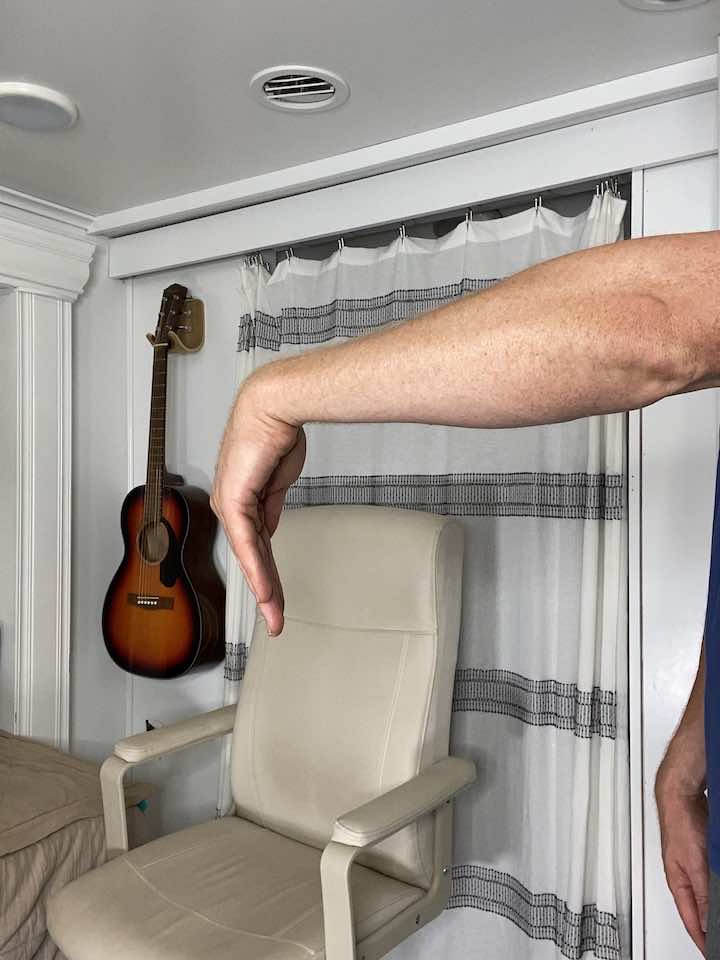
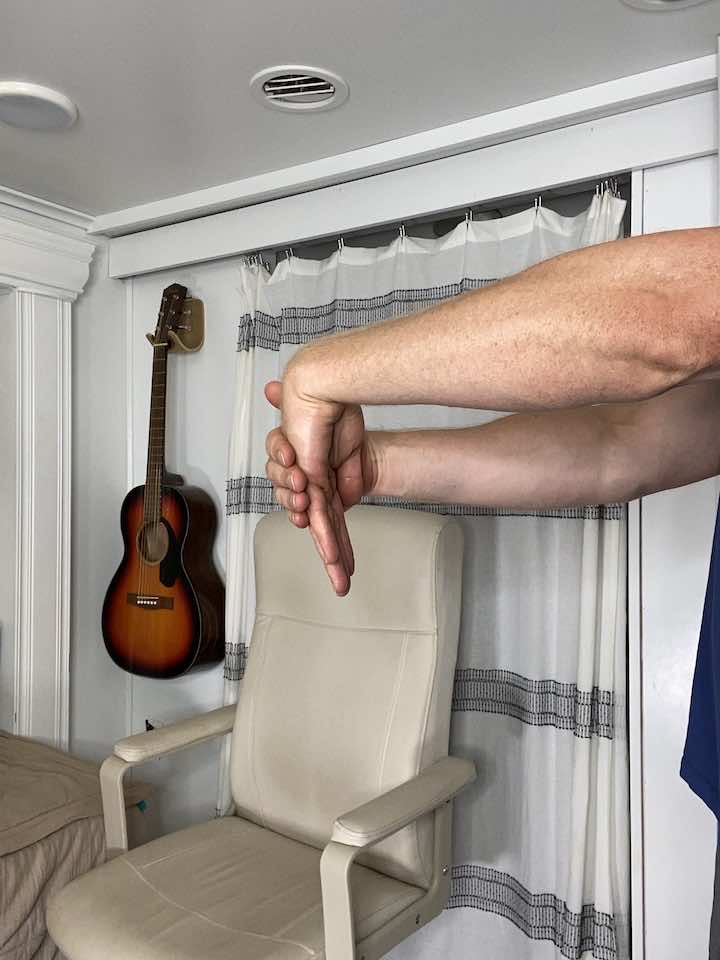
- Straighten your arm and bend your wrist forward as if signaling someone to “come.”
- Use your opposite hand to gently apply pressure across the back of your hand and pull it towards you until you feel a stretch on the top of your forearm.
- Hold for 30 seconds.
- Repeat 5 times, then move to the other arm.
2. Wrist Extensor Stretch
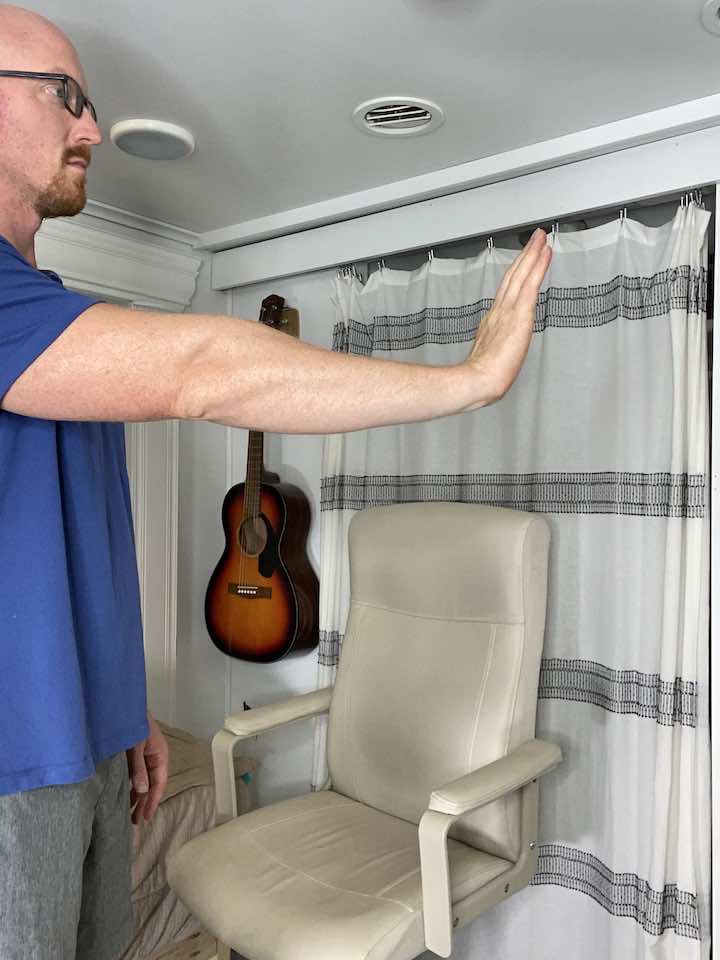
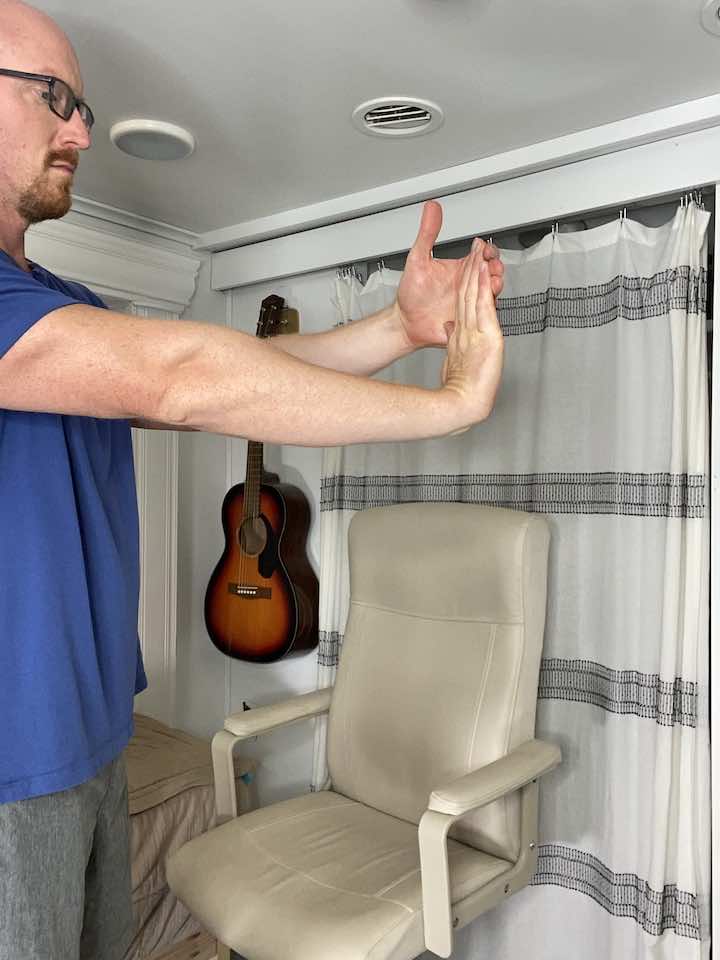
- Straighten your arm and bend your wrist as if signaling someone to “stop.”
- Use your opposite hand to gently apply pressure across the palm and pull it toward it until you feel a stretch inside your forearm.
- Hold for 30 seconds.
- Repeat 3 times, then move to the other arm.
3. Bicep Stretch
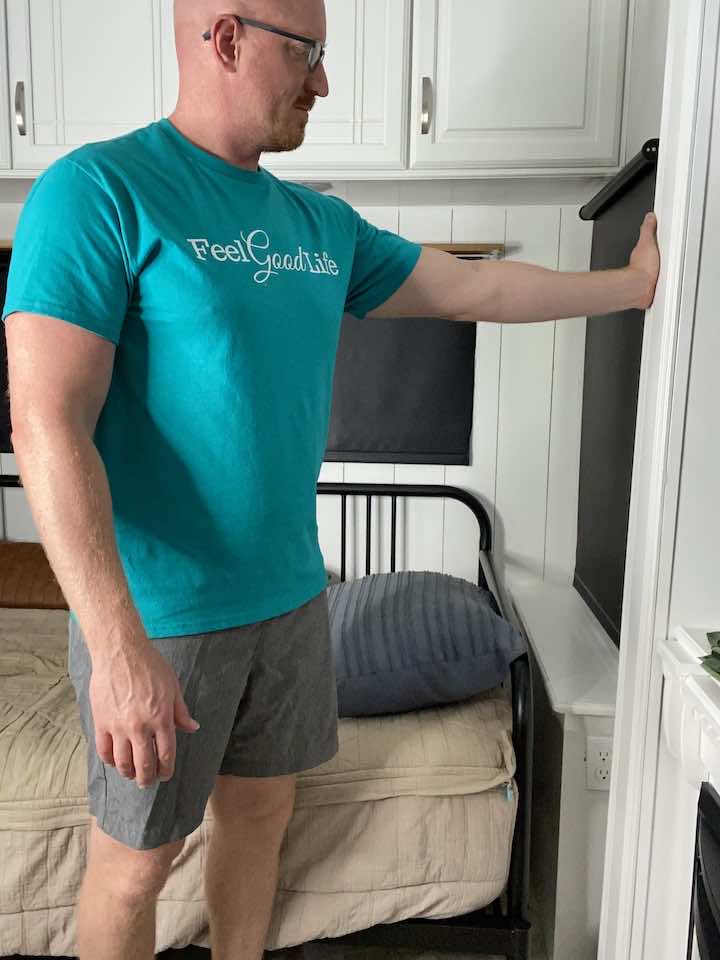

- Stand next to a wall, with your affected arm closest to it.
- Extend your arm behind you and place your palm flat against the wall.
- Slowly rotate your body away from the wall until you feel a gentle stretch in your bicep.
- Hold this position for 30 seconds.
- Release and repeat the stretch 2 more times for a total of 3 repetitions.
Mobilizing the Pinched Nerve
Mobilizing the nerve, especially the ulnar nerve, is crucial in treating a pinched nerve.
1. Ulnar Nerve Glides
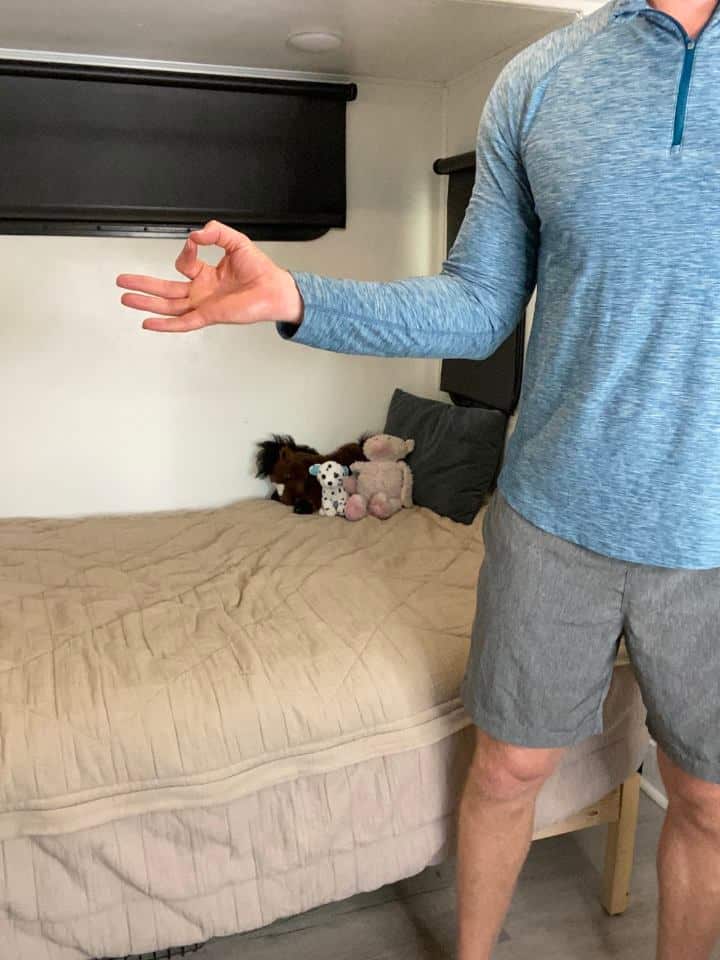
Step 1: Your starting position will be holding your arm out to the side and gently bend the elbow. Make a circle with your thumb and index finger touching as if you’re saying you’re “A-okay.” Your palm should be facing out to the side, away from you.
Step 2: Begin to move the hand towards your head while extending the wrist back towards you. Make sure to keep your “A-okay” sign. The fingers should now be pointing towards you with the palm facing the ceiling.


Step 3: From here, bend the neck so that your head moves away from the working arm.
Step 4: To add an extra stretch to the nerve, slightly lift your bent elbow up towards the ceiling.

Resistance Training
Strengthening the muscles around the elbow can provide better support and prevent future pinching.
1. Rows with Resistance Band
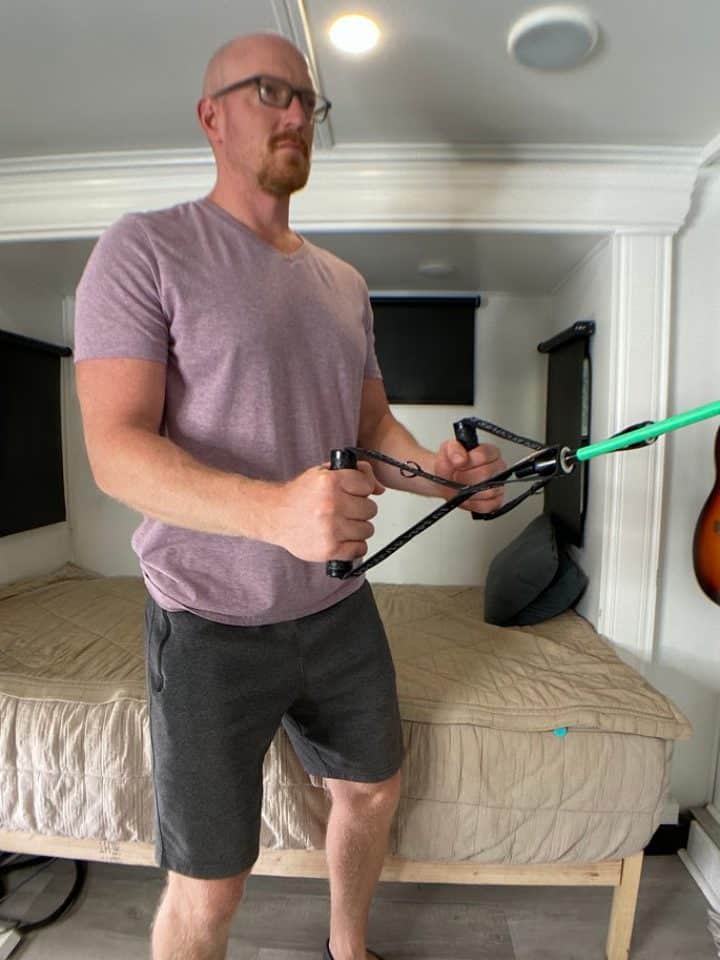
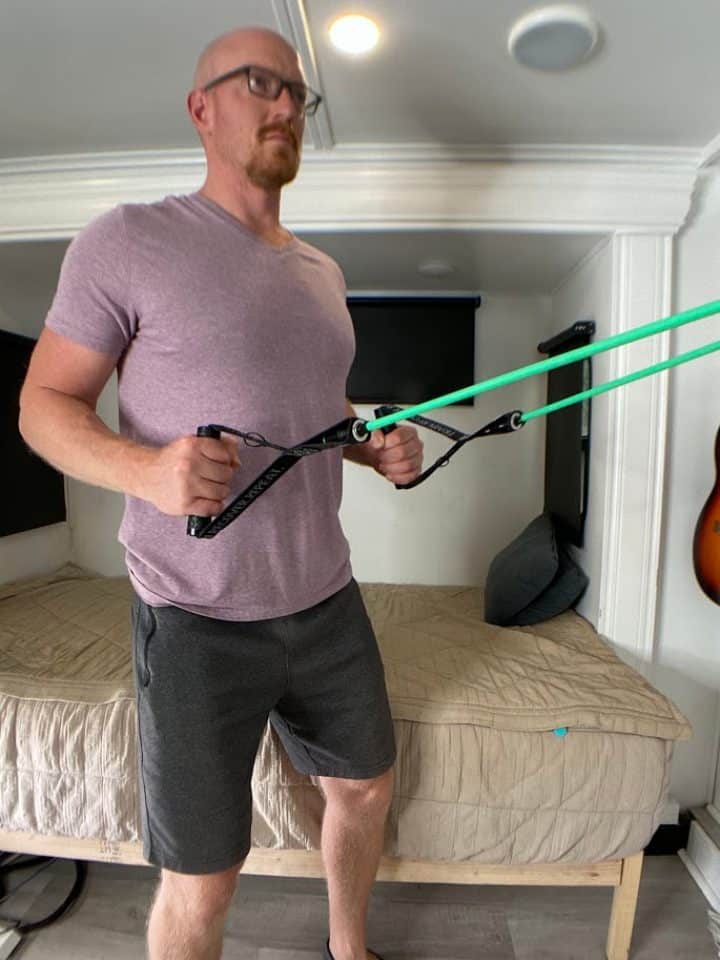
- Hold on to the ends of a resistance band (light, medium or heavy), which you can attach to a door knob.
- Begin with the arms elevated in front of you to shoulder height and the palms facing each other.
- Step back far enough that the resistance bend has a little tension.
- Pull back on the band by bending the elbows and swinging the arms back next to you. Make sure to squeeze the shoulder blades together.
- Hold for 2 seconds, then return to your starting position.
- Repeat 10 repetitions for 3 sets.
2. Pull Downs with Resistance Band
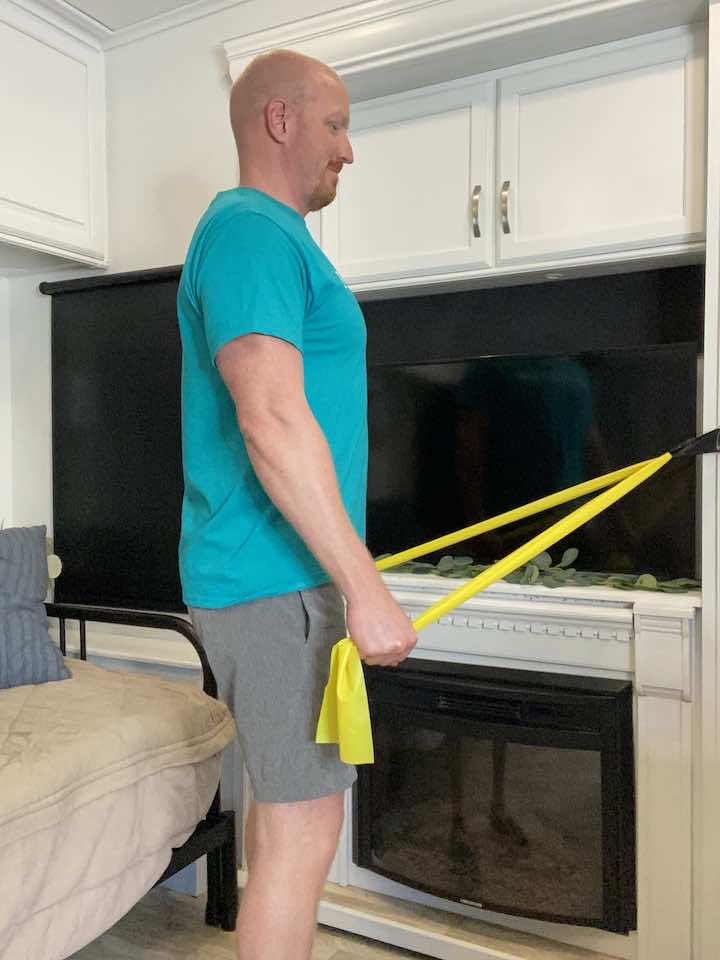
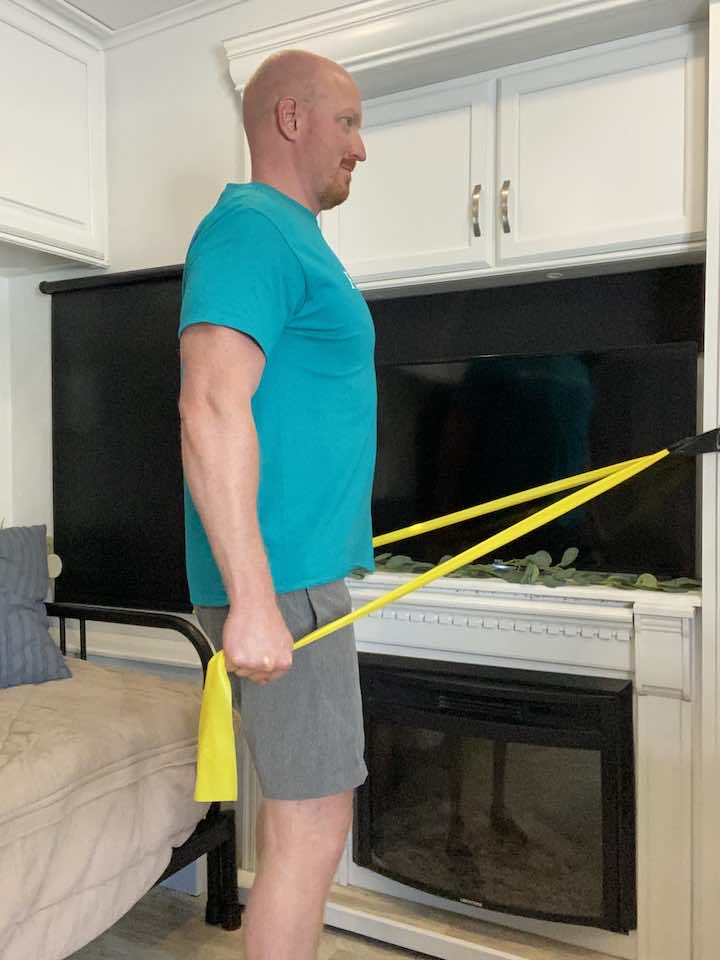
- Securely attach the resistance band to a high anchor point, such as a pull-up bar or a sturdy doorframe.
- Hold the band with both hands, palms facing forward and hands shoulder-width apart.
- Stand facing the anchor point with your arms extended upwards and your hands positioned above your head.
- Keeping your elbows straight, pull the band down towards your chest while squeezing your shoulder blades together.
- Pause at the bottom of the movement and then slowly return to the starting position.
- Repeat for 10 repetitions and aim for 3 sets.
3. Bicep Curls with Resistance Band
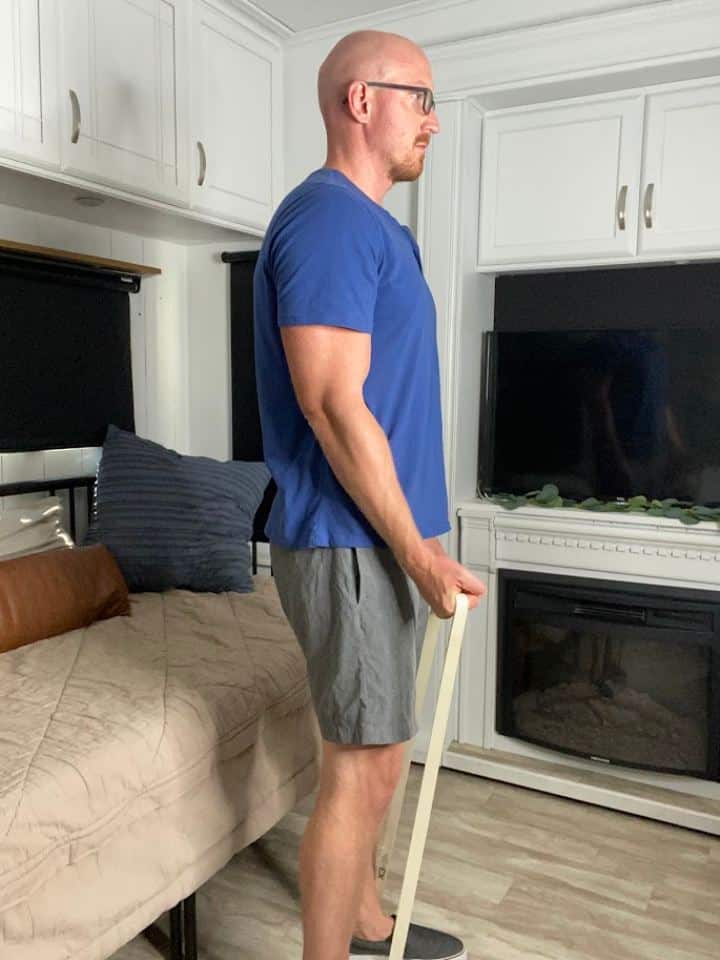
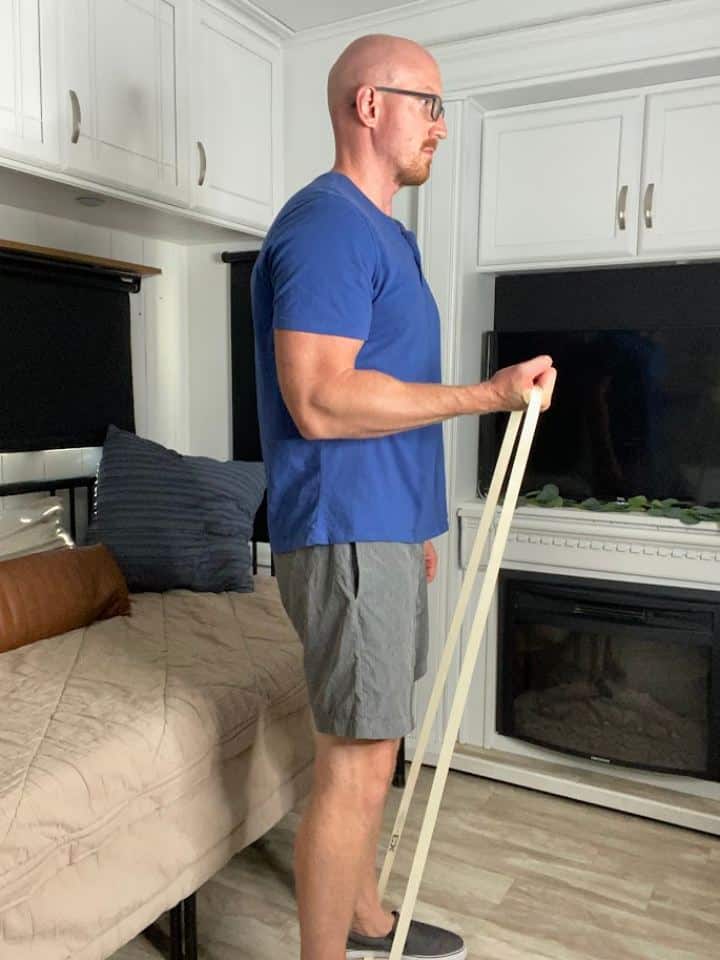
- Stand with both your feet in the middle of the resistance band, holding one end of the band in one hand.
- Keep your arms straight and by your sides, with your palms facing forward.
- Slowly bend your elbow, bringing your hands towards your shoulders while keeping your elbows close to your sides.
- Hold a moment, then slowly straighten your arms to return to the starting position.
- Repeat the movement for 10 repetitions, then switch to the other arm.
- Aim for 3 sets of this exercise.
4. Tricep Extension with Resistance Band
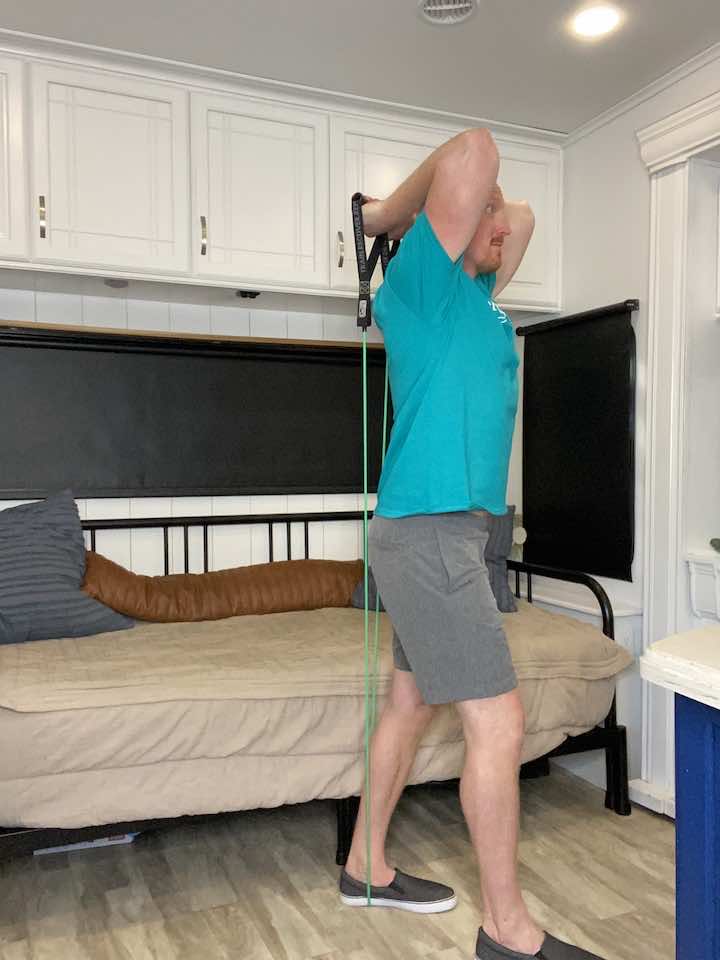
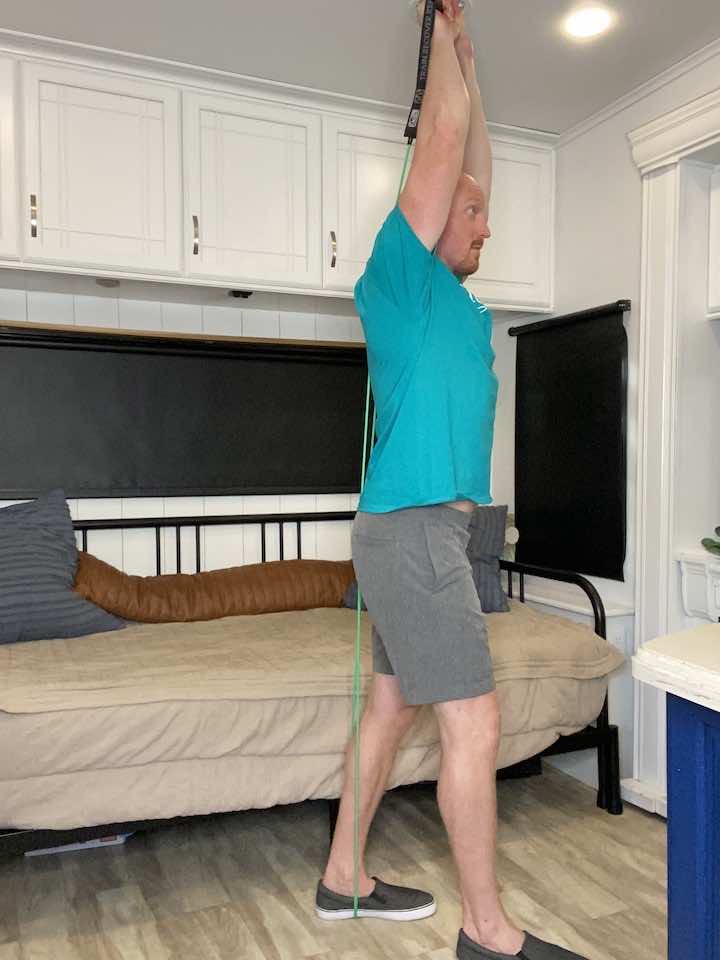
- Stand in the middle of the band with one foot, holding the other end of the band with both hands.
- Extend your arms straight up above your head.
- Lower the band behind your head, bending at the elbow and keeping your elbows pointing forward.
- Extend your arms back up, straightening your elbows.
- Repeat the movement for 10 repetitions, then switch to the other arm.
- Aim for 3 sets of this exercise.
Conclusion
By incorporating these posture adjustments, stretches, nerve mobilizations, and resistance exercises into your routine, you can effectively address a pinched nerve in the elbow. Remember, consistency is key, and gradual progression in these exercises is important. If symptoms persist or worsen, consult a healthcare professional for personalized advice and treatment.













